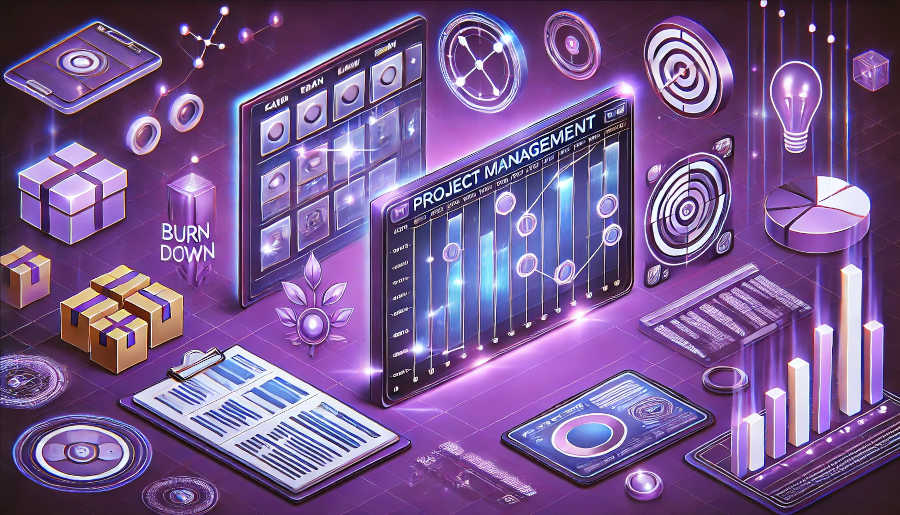Stand-up meetings, also known as daily stand-ups or stand-up scrums, are a crucial part of many project management methodologies, especially Agile. These meetings serve as a quick and efficient way for team members to communicate, align their work, and address any obstacles. They typically last no more than 15 minutes, with each participant briefly sharing what they did the previous day, what they plan to do today, and any issues they're facing.
The significance of stand-up meetings lies in their ability to foster transparency and collaboration within the team. By sharing their progress and challenges daily, team members can keep everyone in the loop, identify potential bottlenecks early on, and work together to find solutions. This open communication helps build trust among team members and ensures that everyone is working towards the same goals. Moreover, stand-up meetings provide a sense of accountability. When team members know they have to report their progress in front of the group, they are more likely to stay focused and motivated to complete their tasks.
However, despite their many benefits, stand-up meetings can sometimes become a source of frustration or disengagement. If not conducted effectively, they can turn into a monotonous ritual where team members go through the motions without really engaging or adding value. That's why it's essential to understand how to stay focused and motivated during these meetings to make the most of this valuable communication opportunity.
Overcoming Distractions
One of the biggest challenges in staying focused during stand-up meetings is dealing with distractions. In today's digital age, it's easy to get sidetracked by notifications from our phones, emails, or other digital devices. Additionally, external distractions such as noise from the environment or interruptions from other people can also make it difficult to concentrate.
To overcome these distractions, it's important to create a conducive environment for the meeting. This can involve finding a quiet space where team members can gather without interruptions. If the meeting is being held in a shared workspace, consider using visual cues such as a "do not disturb" sign or closing the door to indicate that the team is in a meeting. Another effective strategy is to encourage team members to turn off their phones or put them on silent mode before the meeting starts. This helps eliminate the temptation to check notifications during the meeting and keeps everyone focused on the task at hand.
In addition to external distractions, internal distractions such as personal thoughts or worries can also affect our ability to stay focused. To address this, it's important to practice mindfulness and be present in the moment. Before the meeting starts, take a few deep breaths and try to clear your mind of any distractions. During the meeting, focus on what the speaker is saying and avoid letting your mind wander. If you find yourself getting distracted, gently bring your attention back to the meeting. By practicing mindfulness, you can improve your focus and engagement during stand-up meetings.
Setting Clear Objectives
Another key factor in staying focused and motivated during stand-up meetings is setting clear objectives. Without a clear purpose, it's easy for the meeting to veer off track and become a waste of time. Before the meeting starts, the team leader or facilitator should clearly define the objectives of the meeting and communicate them to the team. This can include topics to be discussed, decisions to be made, or actions to be taken.
Having clear objectives helps team members understand what is expected of them and what they should be focusing on during the meeting. It also provides a framework for the discussion and ensures that everyone is on the same page. When setting objectives, it's important to make them specific, measurable, achievable, relevant, and time-bound (SMART). This helps ensure that the objectives are clear and actionable and that the team can track their progress towards achieving them.
In addition to setting clear objectives, it's also important to keep the meeting focused on the agenda. The team leader or facilitator should monitor the discussion and ensure that it stays on track. If a topic starts to veer off into a tangent, the facilitator should gently redirect the conversation back to the agenda. By keeping the meeting focused on the agenda, the team can make the most of the limited time and ensure that all important topics are covered.

Encouraging Active Participation
Active participation is essential for keeping team members engaged and motivated during stand-up meetings. When team members feel that their voices are heard and that their contributions are valued, they are more likely to be invested in the meeting and the project as a whole. To encourage active participation, it's important to create a safe and inclusive environment where everyone feels comfortable sharing their thoughts and ideas.
The team leader or facilitator should start the meeting by welcoming everyone and encouraging them to share their perspectives. They should also make an effort to involve everyone in the discussion and avoid monopolizing the conversation. This can involve asking open-ended questions, inviting quieter team members to share their thoughts, and encouraging debate and discussion. When team members share their ideas, the facilitator should listen actively and show appreciation for their contributions. This helps build trust and confidence among team members and encourages them to continue participating.
In addition to creating a safe and inclusive environment, it's also important to provide opportunities for team members to collaborate and problem-solve together. This can involve dividing the team into smaller groups to discuss specific topics or challenges and then reconvening to share their findings. By working together, team members can learn from each other, generate new ideas, and find solutions to problems more effectively. This collaborative approach not only helps keep team members engaged but also fosters a sense of teamwork and camaraderie within the group.
Recognizing and Celebrating Achievements
Finally, recognizing and celebrating achievements is an important way to stay motivated during stand-up meetings. When team members feel that their hard work and contributions are recognized and appreciated, they are more likely to be motivated to continue performing at their best. The team leader or facilitator should take a few minutes at the end of each stand-up meeting to recognize and celebrate the achievements of the team and individual team members.
This can involve highlighting specific tasks that were completed, milestones that were reached, or challenges that were overcome. The recognition can be as simple as a verbal thank you or a shout-out to the team member. It can also be more formal, such as a written recognition or a small reward. By recognizing and celebrating achievements, the team leader or facilitator can boost morale, build confidence, and encourage team members to continue working hard.
In addition to recognizing individual achievements, it's also important to celebrate the achievements of the team as a whole. This can involve acknowledging the progress that the team has made towards achieving its goals, highlighting the collaborative efforts that have led to success, and expressing gratitude for the team's hard work and dedication. By celebrating the team's achievements, the team leader or facilitator can foster a sense of pride and ownership among team members and strengthen the team's bond.
Conclusion
In conclusion, staying focused and motivated during stand-up meetings is essential for the success of any project. By understanding the importance of these meetings, overcoming distractions, setting clear objectives, encouraging active participation, and recognizing and celebrating achievements, team members can make the most of this valuable communication opportunity and work together more effectively towards achieving their goals.
Stand-up meetings provide a platform for team members to communicate, collaborate, and align their work. When conducted effectively, they can help build trust, foster transparency, and improve accountability within the team. However, to realize these benefits, it's important for team members to be present, engaged, and motivated during the meetings.
By implementing the strategies outlined in this article, team members can enhance their focus and motivation during stand-up meetings and contribute to the success of the project. Whether it's creating a distraction-free environment, setting clear objectives, encouraging active participation, or recognizing and celebrating achievements, every small step can make a big difference in the effectiveness of these meetings and the overall performance of the team. So, let's make the most of our stand-up meetings and work together to achieve our goals.
ARTICLE TITLE :How to stay focused and motivated in stand-up meetings ,AUTHOR :ITpmlib

















